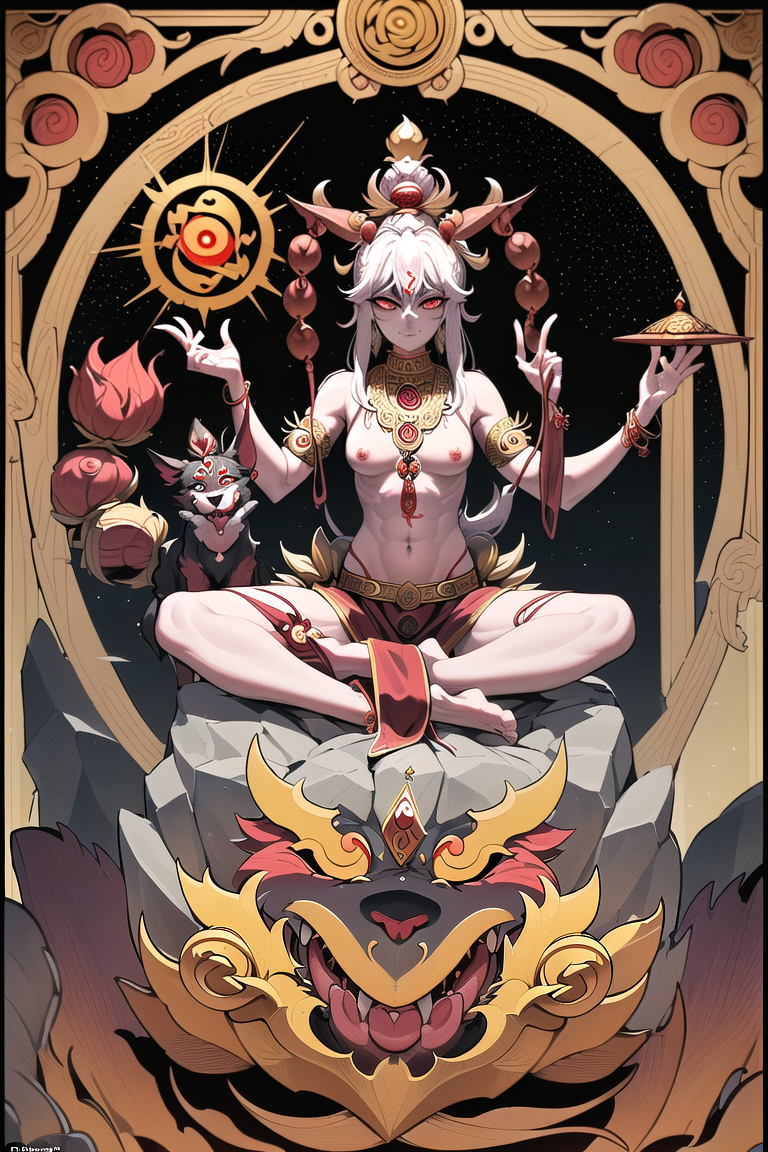Bhairava is a manifestation of Lord Shiva, one of the principal deities of Hinduism responsible for destruction and transformation. The term “Bhairava” means “terrifying” or “frightful”.
Bhairava is often depicted as a fierce form of Shiva, who controls the universe’s destruction.
Significance of Bhairava:
- Destruction of Evil and Ignorance:
- Bhairava represents the destruction of evil and ignorance. He is often depicted destroying demons and negative forces that hinder spiritual progress and wellbeing.
- Time:
- Bhairava is also associated with time, and in some contexts, he is called Kala Bhairava. “Kala” means “time” in Sanskrit. He signifies the inevitable power of time which governs all existence.
- Guardian of the Sacred:
- Bhairava is considered the guardian of temples and holy places. In many Hindu temples, especially those dedicated to Lord Shiva, there is often a statue of Bhairava.
- Spiritual Progress:
- He is revered by yogis and sadhus who seek spiritual progress, as it is believed that the blessing of Bhairava can remove obstacles on the spiritual path.
Significance of Bhairava’s Dog:
- Vehicle (Vahana):
- The dog, often depicted beside Bhairava, serves as his vehicle or “vahana”. Each deity in Hinduism is typically associated with a particular animal that serves as their mount.
- Loyalty and Vigilance:
- Dogs are symbols of loyalty and vigilance. In the context of Bhairava, the dog represents the deity’s ever-watchful nature over his devotees and sacred places.
- Spiritual Symbolism:
- In spiritual contexts, the dog is sometimes interpreted as a symbol of the dharma (righteous path). Just like a dog follows its owner everywhere, a spiritual seeker is advised to follow the path of dharma unflinchingly.
- Control Over Desire:
- The dog can also represent desire or the base instincts. Bhairava’s control over the dog symbolizes his mastery over these aspects, indicating the transcendence of the base instincts to achieve spiritual enlightenment.
The Vajra is a significant symbol and ritual object in various Eastern spiritual traditions, including Tibetan Buddhism, Bon, and others. It’s a tool used in ceremonies, meditations, and practices associated with these traditions. Here are the contexts in which the Vajra is used as a physical instrument in the magical arts of these specific traditions:
1. Tibetan Buddhism:
- Symbol of Indestructibility:
- In Tibetan Buddhism, the Vajra symbolizes the indestructible nature of diamond and the unstoppable force of a thunderbolt. It represents spiritual power, firmness, and compassion.
- Rituals and Ceremonies:
- The Vajra is used in various rituals and ceremonies to invoke the blessings of deities, remove obstacles, and establish a sacred space for spiritual practices.
- Meditation:
- Practitioners often use the Vajra during meditation to symbolize and contemplate the indestructible, diamond-like nature of the enlightened mind.
2. Bon Tradition:
- Magical Practices:
- In the Bon tradition, the Vajra is used in magical practices to influence the natural world, cure diseases, and overcome spiritual obstacles.
- Rituals:
- It is also used in rituals to invoke deities and spirits, asking for their blessings and protection.
3. Vajrabhairava and Yamantaka:
- Tantric Practices:
- Vajrabhairava and Yamantaka are wrathful deities in Vajrayana Buddhism, often associated with the conquest of death and negativities. The Vajra, in this context, is used in tantric practices to transform anger, hatred, and aggression into wisdom and compassion.
- Symbol of Enlightenment:
- The Vajra symbolizes the transformation of the base, unenlightened mind into the enlightened, indestructible mind of a Buddha.
- Ritual Dances and Dramas:
- The Vajra is often used in ritual dances and dramas depicting the deities’ conquest over evil forces and the transformation of negative emotions.
4. Physical Instrument in Magical Arts:
- Energy Channeling:
- The Vajra is believed to channel spiritual energy. Practitioners use it to direct and focus energy during rituals and magical practices.
- Protection:
- It is often used for protection against negative forces and energies. The Vajra’s indestructible nature symbolizes the practitioner’s invincibility against obstacles and negativities.
- Initiation:
- In some practices, the Vajra is used during initiation ceremonies, where it symbolizes the transmission of spiritual power and blessings from the master to the disciple.
Each use of the Vajra is deeply symbolic and is associated with complex rituals and practices aimed at spiritual transformation, protection, and enlightenment. The specific uses and interpretations can vary widely between different schools and traditions within Tibetan Buddhism, Bon, and related spiritual paths.


